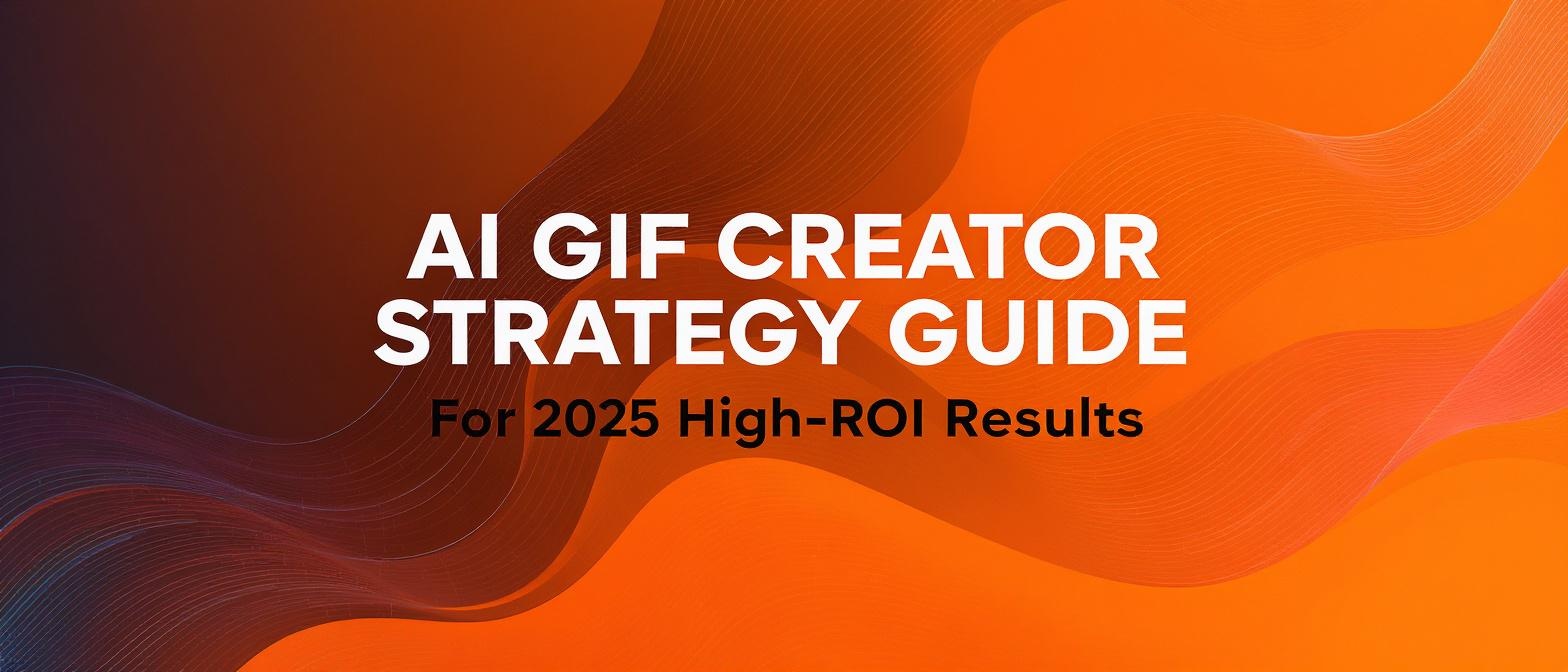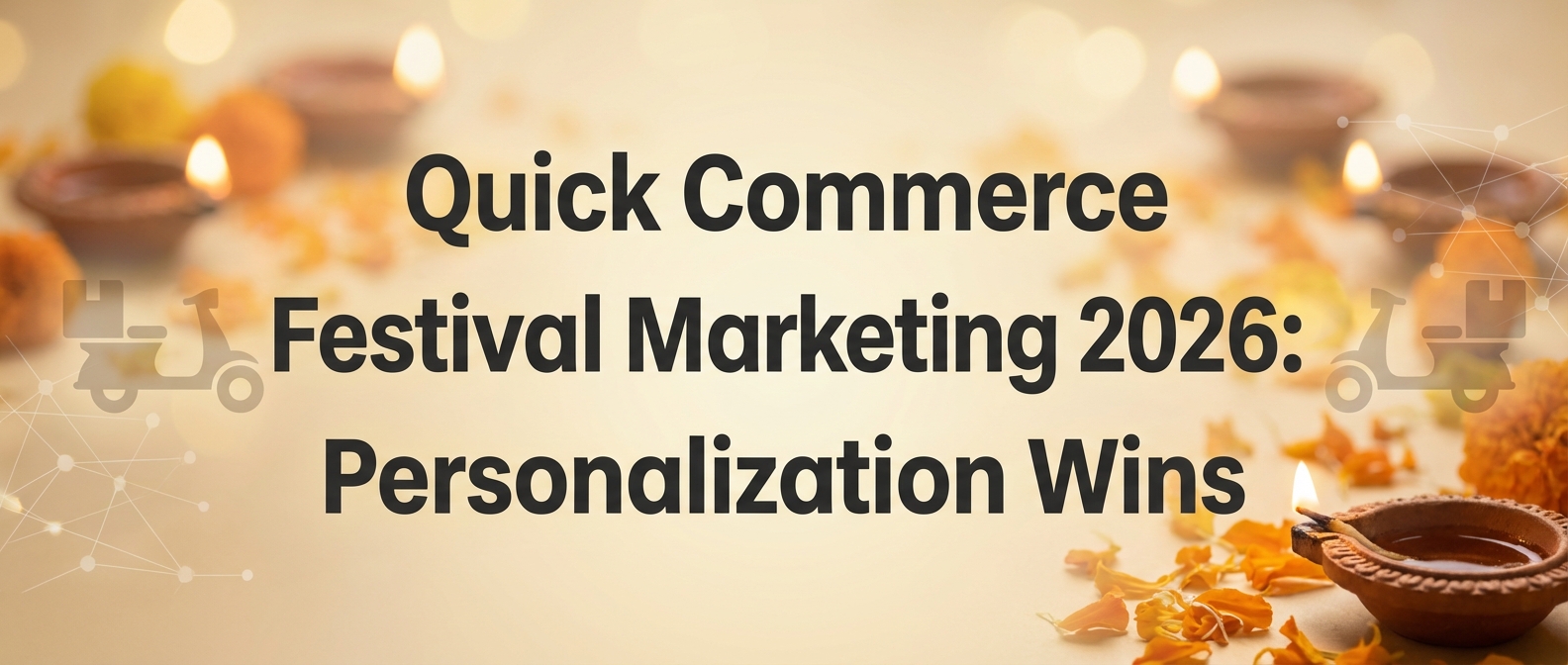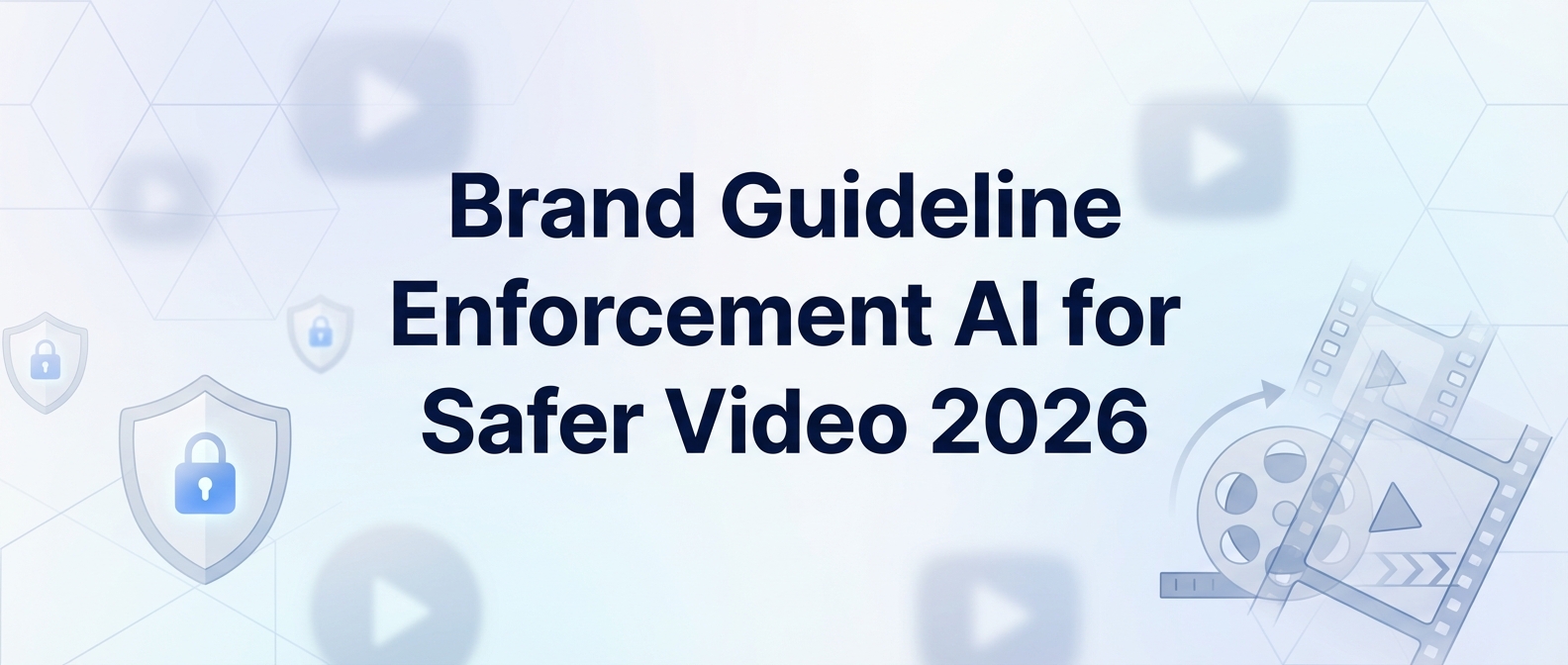Beyond Memes: Your 2025 Guide to a High-ROI AI GIF Creator Strategy
Key Takeaways
- Focus on brand authenticity and strategic complexity, not just novelty.
- AI-powered GIF and video creation can significantly scale marketing efforts.
- Ethical frameworks and compliance are non-negotiable for brand integrity.
- Real ROI requires a data-driven approach to performance and cost metrics.
- Future-proof your strategy by adopting integrated AI ecosystems for 2025 and beyond.
The market for AI GIF generators is exploding, projected to surge from $1.5 billion in 2024 to over $8.2 billion by 2033. While one-click tools promise effortless content creation, this rapid growth masks a critical problem for businesses: most guides focus on the novelty of AI-powered tools but completely ignore the strategic complexities required for scalable success. They fail to address the crucial challenges of maintaining brand authenticity, ensuring ethical compliance, and measuring tangible return on investment (ROI). Using an AI GIF creator https://www.truefan.ai/blogs/ai-video-generator-text-speech is no longer just about making funny memes; it’s about building a sustainable and secure content engine. This article moves beyond the superficial to provide a comprehensive framework for integrating AI-generated visuals into your marketing workflow. We will explore the technical nuances, ethical guardrails, and advanced strategies that separate amateur efforts from professional, high-impact results, ensuring your brand is a leader, not a liability, in the AI content revolution.
Section 1 – Re-framing the Challenge: From Simple GIFs to Strategic Visuals
The initial appeal of an AI GIF creator is its simplicity. However, this ease-of-use often masks deeper strategic challenges. For businesses, the goal isn’t just to produce a GIF; it’s to create on-brand, effective, and safe visual assets at scale. Relying on basic tools can lead to generic-looking content that lacks a distinct brand voice and, more importantly, fails to build trust. According to recent industry surveys, one of the biggest challenges in AI content creation is maintaining E-E-A-T (Expertise, Experience, Authoritativeness, and Trustworthiness)—the very qualities Google prioritizes. When every competitor has access to the same tools, how do you differentiate?
Furthermore, while AI-optimized content can achieve 83% higher engagement rates than conventional content, this lift is not guaranteed. It requires a thoughtful approach that blends AI’s efficiency with human creativity and oversight. The real challenge isn’t generating a single animation but building a scalable workflow that can produce hundreds of localized, personalized, and compliant visual assets for different markets and customer segments without sacrificing quality or brand integrity. This requires moving beyond simple text-to-GIF tools and embracing platforms designed for professional use.
Section 2 – Innovation & Solutions: The Evolution into AI Video Platforms
The limitations of basic GIF tools have paved the way for a new generation of sophisticated AI content platforms. These systems are not just about creating short, looping animations; they are comprehensive solutions for generating high-fidelity video content. The key innovation lies in moving from abstract AI generation to using digital twins of real, licensed individuals. This approach fundamentally solves the authenticity and trust problem. Instead of a generic animation, brands can now feature a consistent, photorealistic virtual spokesperson in their communications.
Platforms like Studio by TrueFan AI enable this leap by offering a library of pre-licensed, photorealistic AI avatars based on real influencers. This provides the best of both worlds: the scalability and flexibility of AI with the relatability and trustworthiness of a human face. The underlying technology is far more advanced than a simple GIF maker. It involves complex lip-syncing algorithms trained on vast datasets to ensure that the avatar’s speech perfectly matches the audio script in over 175 languages. This script-to-video capability allows a single marketing message to be instantly adapted for global audiences with perfect pronunciation and natural inflection, a task that would be prohibitively expensive and time-consuming with traditional methods. This technical depth is what separates strategic content generation from simple meme-making. https://www.truefan.ai/blogs/ai-video-api-integration-guide
Section 3 – Advanced Implementation: A Framework for Scalable Visual Content
Adopting advanced AI for visual content requires more than just signing up for a tool; it demands a structured implementation framework. Competitors often gloss over this, but a systematic approach is essential for maximizing ROI and ensuring brand consistency.
Step 1: Establish Your Visual Identity Baseline
Before generating any content, define the persona of your AI avatar. Select an avatar from the platform’s library that aligns with your brand’s demographics and values. Document the tone of voice, style, and even the type of background they will use. This creates a consistent brand asset, not just a series of disconnected GIFs or videos.
Step 2: Develop a Core Messaging Matrix
Create a spreadsheet mapping out core messages (e.g., product announcements, tutorials, FAQs) to specific target audience segments and languages. This matrix will serve as the foundation for your script variations. For example, a new feature launch could have five script variations tailored to audiences in the US, Germany, Japan, Brazil, and India.
Step 3: Localize and Generate at Scale
Using this matrix, input your core scripts into the platform. This is where advanced features become critical. For instance, with Studio by TrueFan AI’s 175+ language support and AI avatars, you can generate all five localized video variants in a matter of minutes. The AI handles the translation, voice cloning, and perfect lip-syncing for each language, ensuring a native-level delivery without hiring five different agencies.
Step 4: Integrate and Automate Distribution
Use webhooks or API integrations to connect the AI platform directly to your content management system (CMS) or social media scheduler. This allows for a seamless workflow where generated videos are automatically populated into drafts for different channels. For example, a 9:16 version for Instagram Reels, a 1:1 version for LinkedIn, and a 16:9 version for YouTube can be generated simultaneously and pushed to their respective workflows.
Step 5: Measure, Iterate, and Optimize
Track the performance of each video variant. A/B test different avatars, messages, or calls-to-action. Use the platform’s duplication features to quickly iterate on the winning versions. This data-driven loop transforms content creation from a guessing game into a predictable, optimizable engine for growth. https://www.truefan.ai/blogs/ai-video-generator-text-speech
Section 4 – Overlooked Considerations: Ethics, Compliance, and Trust
A significant gap in most discussions about AI-generated content is the glaring omission of ethical considerations and legal compliance. As we enter an era where deepfake technology is becoming more accessible, consumers and regulators are rightfully concerned about misuse. Using AI-powered tools without a strong ethical framework is a significant brand risk. The conversation must shift from “what can we create?” to “what should we create, and how do we do it responsibly?”
The most critical consideration is consent and intellectual property. Many free AI tools are trained on data scraped from the internet without permission, creating a legal minefield for businesses. Using platforms that feature unlicensed or synthetically generated faces can expose a company to future litigation. The ethical high ground belongs to platforms that use avatars based on real people who have given explicit, fair-compensated consent for their likeness to be used. This “consent-first” model is non-negotiable for any serious business. Furthermore, as Google’s guidance on AI content emphasizes, trustworthiness is paramount. Built-in content moderation that automatically blocks hate speech, political endorsements, and explicit content is not just a feature; it’s a necessity for maintaining brand safety and platform integrity. https://www.truefan.ai/blogs/ai-generated-faces-implementation-guide
Section 5 – ROI & Metrics: Calculating the True Value of AI Content
The competitor’s article mentions a “33% higher click-through rate,” but this single metric barely scratches the surface of AI’s true ROI. A robust measurement framework is essential to justify investment and scale operations. The value of advanced AI content platforms is demonstrated through efficiency gains, performance lift, and risk mitigation.
First, calculate the Cost Per Asset (CPA). Compare the traditional cost of producing a localized video (hiring an actor, studio time, editor, translation service) with the AI-driven approach. A traditional shoot might cost $5,000 for one video in one language. An AI platform can generate that same video in ten languages for a fraction of that cost, drastically reducing your CPA.
Second, measure the Performance Lift. Go beyond CTR and track deeper metrics. Research shows AI-powered marketing can boost conversion rates by up to 1.5x. A/B test AI-generated video ads against static images or text-based ads to quantify the lift in lead generation, sales, or other key conversion events.
Solutions like Studio by TrueFan AI demonstrate ROI through scalability. The ability to generate unlimited variations for A/B testing at minimal cost allows for rapid optimization that is impossible with traditional methods. For example, you can test four different avatars with five different scripts across three different channels, resulting in 60 unique assets. Finding the top-performing combination could increase your overall campaign ROI by double-digit percentages. https://www.truefan.ai/blogs/ai-video-generation-roi-marketing-intelligence-guide
Section 6 – Future Roadmap: Preparing for the 2025 Content Landscape
The rapid evolution of generative AI means that the tools and strategies we use today will be foundational tomorrow. Looking ahead to 2025, several key trends are set to define the next wave of AI in content creation. The most significant shift is the rise of “Content Creation Centaurs”—a hybrid model where human creativity and strategic oversight are augmented by AI’s execution power. The future isn’t about replacing marketers but about empowering them to operate at a higher strategic level.
Prepare for this by investing in training your team on prompt engineering, AI ethics, and data analysis. The most valuable marketing professionals will be those who can effectively direct AI to achieve specific business goals. Another emerging trend is the move towards integrated AI ecosystems. Instead of using separate tools for text, images, and video, businesses will adopt unified platforms that manage the entire content lifecycle, from ideation and generation to distribution and analytics. To stay ahead, start evaluating platforms that offer robust integrations (APIs, webhooks) and a clear commitment to ethical AI and compliance, as these will be the cornerstones of future success.
Frequently Asked Questions (FAQs)
1. How can we use AI to create GIFs and videos without losing our brand’s unique voice and authenticity?
The key is to move beyond generic tools and use platforms that offer customization and consistency. By selecting a specific AI avatar that aligns with your brand persona and establishing strict guidelines for script tone, messaging, and visual backgrounds, you create a consistent and authentic brand asset. Authenticity comes from the consistent application of your brand strategy, with AI serving as the execution engine.
2. What are the primary legal and ethical risks with AI-generated content, and how can we mitigate them?
The main risks are copyright infringement (from models trained on scraped data) and the potential for creating misleading deepfakes. Mitigate these by choosing a platform like Studio by TrueFan AI that uses avatars based on real, licensed influencers who have given explicit consent. Prioritize platforms with built-in content moderation and a clear ethical framework, ensuring you are not accidentally creating harmful or non-compliant content.
3. Free AI GIF creators are everywhere. Why should we pay for a professional platform?
Free tools are great for personal use but lack the essential features for business: brand safety, legal compliance, scalability, and high-quality output. Paid platforms provide licensed avatars (avoiding legal risk), robust content moderation, multi-language support, consistent HD/4K output, and the API integrations needed to build a scalable and secure content workflow.
4. How does an AI platform handle content moderation and prevent misuse of the technology?
Professional platforms use a “walled garden” approach. Studio by TrueFan AI, for example, has real-time profanity and content filters that block prohibited topics like hate speech, political endorsements, and explicit material. All generated content is watermarked for traceability, and the use of licensed avatars within a controlled system prevents the creation of unauthorized deepfakes of public figures.
5. Can AI-powered tools truly scale for a global enterprise with teams in different regions?
Yes, this is where advanced platforms excel. With support for over 175 languages, a centralized platform allows a global marketing team to create one core message and instantly localize it for dozens of markets. Features like project duplication and team accounts enable different regional teams to adapt content for their specific needs while maintaining central brand control and consistency.
6. How does the quality of AI-generated video compare to a traditional video shoot?
While traditional shoots offer unparalleled creative control for high-end brand campaigns, AI video excels in producing high-quality content at scale for marketing, training, and communication needs. The photorealistic avatars and natural voice cloning on platforms like Studio by TrueFan AI result in professional-grade videos that are often indistinguishable from a simple human-shot recording, especially for direct-to-camera presentations.
Conclusion
The conversation around AI-powered tools is maturing. While the simple joy of turning a phrase into a GIF was a fascinating entry point, the strategic imperative for 2025 and beyond is to harness this technology as a scalable, ethical, and profitable content engine. The winning approach is not about replacing human creativity but augmenting it, allowing marketers to focus on strategy while AI handles the complex, multilingual execution. By moving beyond basic creators and adopting advanced, video-first platforms with strong ethical guardrails, businesses can unlock unprecedented efficiency and global reach. The future of content isn’t just automated; it’s intelligent, responsible, and measurable. The next step is to audit your current content workflow and identify where a strategic, AI-driven approach can deliver not just novelty, but tangible, bottom-line results.




